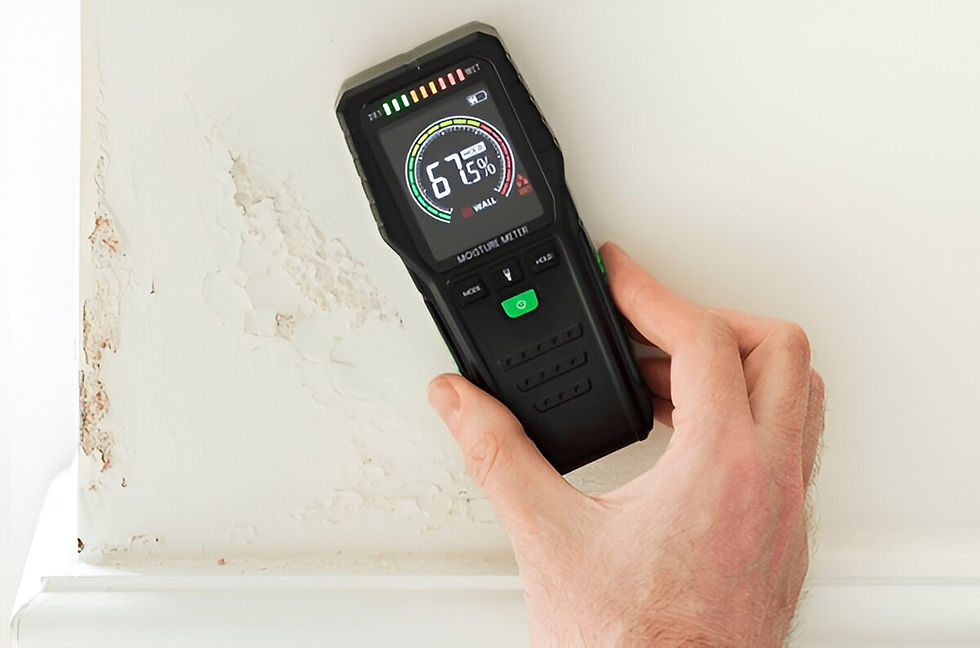Green Guard’s Proven Steps for Safe and Effective Mold Remediation
- mariotovaropo
- May 2
- 4 min read
Mold growth in homes and commercial spaces can pose serious health risks and structural damage if not addressed promptly and effectively. Green Guard Mold Remediation has developed a systematic approach to tackle mold issues, ensuring a safe and thorough remediation process. This article outlines the essential steps involved in their proven mold remediation strategy, emphasizing the importance of professional intervention and preventive measures.
Understanding Mold and Its Risks
Mold is a type of fungus that thrives in damp environments. It can grow on various surfaces, including wood, drywall, and carpets. Understanding the risks associated with mold is crucial for homeowners and business owners alike.
Health Implications
Exposure to mold can lead to a range of health issues, particularly for individuals with respiratory conditions, allergies, or weakened immune systems. Common symptoms include:
Respiratory problems: Coughing, wheezing, and difficulty breathing.
Allergic reactions: Sneezing, runny nose, and skin rashes.
Infections: In severe cases, mold exposure can lead to serious infections.
Structural Damage
Mold can compromise the integrity of buildings. It can weaken structural components, leading to costly repairs. Common signs of mold damage include:
Discoloration: Stains on walls or ceilings.
Warping: Distortion of wood or drywall.
Odor: A musty smell often indicates mold presence.
Initial Assessment and Inspection
The first step in effective mold remediation is a comprehensive assessment of the affected area. This involves identifying the source of moisture and the extent of mold growth.
Visual Inspection
A trained professional will conduct a thorough visual inspection, looking for signs of mold growth and moisture intrusion. Key areas to examine include:
Basements and crawl spaces: Often damp and prone to mold.
Bathrooms: High humidity levels can promote mold growth.
Kitchens: Leaks from plumbing can create ideal conditions for mold.
Moisture Measurement
Using specialized tools, professionals measure humidity levels and moisture content in building materials. This helps determine the severity of the mold problem and the necessary remediation steps.
Containment of Affected Areas
Once mold presence is confirmed, the next step is to contain the affected areas to prevent spores from spreading during the remediation process.
Physical Barriers
Professionals will set up physical barriers using plastic sheeting to isolate the contaminated area. This prevents mold spores from traveling to unaffected spaces.
Negative Air Pressure
Creating negative air pressure within the containment area helps ensure that any airborne spores are drawn into the filtration system rather than escaping into the rest of the building.
Mold Removal Techniques
The actual removal of mold is a critical phase in the remediation process. Various techniques are employed depending on the severity of the infestation.
Cleaning and Disinfection
For non-porous surfaces, cleaning with specialized mold removal solutions can effectively eliminate mold. This process often involves:
Scrubbing: Using brushes and cloths to remove visible mold.
Disinfecting: Applying antimicrobial solutions to kill remaining spores.
Removal of Contaminated Materials
In cases of extensive mold growth, it may be necessary to remove and dispose of contaminated materials, such as drywall or carpeting. This ensures that mold does not return.
Drying and Dehumidification
After mold removal, it is essential to dry the affected areas thoroughly to prevent future growth. This involves:
Industrial Fans and Dehumidifiers
Using high-powered fans and dehumidifiers helps to reduce moisture levels in the air and on surfaces. This step is crucial in creating an environment that is inhospitable to mold.
Monitoring Moisture Levels
Professionals will continue to monitor moisture levels until they reach acceptable thresholds, ensuring that the area is completely dry before moving on to the next steps.
Restoration and Repair
Once the mold has been effectively removed and the area dried, restoration and repair work can begin. This step is vital for returning the space to its original condition.
Replacing Materials
Any materials that were removed during the remediation process will need to be replaced. This may include:
Drywall: Installing new drywall where necessary.
Flooring: Replacing carpets or tiles that were contaminated.
Painting and Finishing
After repairs, the final touches involve painting and finishing the restored areas. Using mold-resistant paints can help prevent future mold growth.
Preventive Measures
To ensure that mold does not return, it is essential to implement preventive measures. This involves addressing the underlying causes of moisture and maintaining a dry environment.
Regular Inspections
Conducting regular inspections of your property can help identify potential moisture issues before they lead to mold growth. Key areas to monitor include:
Roof and gutters: Ensure they are in good condition to prevent leaks.
Plumbing: Regularly check for leaks and drips.
Humidity Control
Maintaining indoor humidity levels below 60% can significantly reduce the risk of mold growth. Consider using:
Dehumidifiers: Especially in damp areas like basements.
Air conditioning: Helps regulate humidity levels throughout the home.
Professional Mold Remediation Services
While some homeowners may attempt DIY mold removal, hiring professionals is often the safest and most effective option. Professional services offer:
Expertise and Experience
Trained mold remediation specialists have the knowledge and tools necessary to handle mold issues effectively. They can identify hidden mold and ensure thorough removal.
Advanced Techniques
Professionals utilize advanced techniques and equipment that are not typically available to the average homeowner. This includes:
HEPA filtration systems: To capture airborne spores.
Moisture meters: For accurate moisture level assessments.
Conclusion
Mold remediation is a critical process that requires careful planning and execution. By following the proven steps outlined by Green Guard Mold Remediation, property owners can ensure a safe and effective resolution to mold issues. From initial assessment to preventive measures, each step plays a vital role in protecting health and property. Investing in professional mold remediation services not only addresses current mold problems but also helps prevent future occurrences, ensuring a safe and healthy environment for all.
For more information about Mold Remediation in Edison New Jersey please contact:
Business Name: Green Guard Mold Remediation of Edison
Address: 6 Kilmer Rd, Edison, NJ 08817, United States
Phone: 908-762-8046





Comments